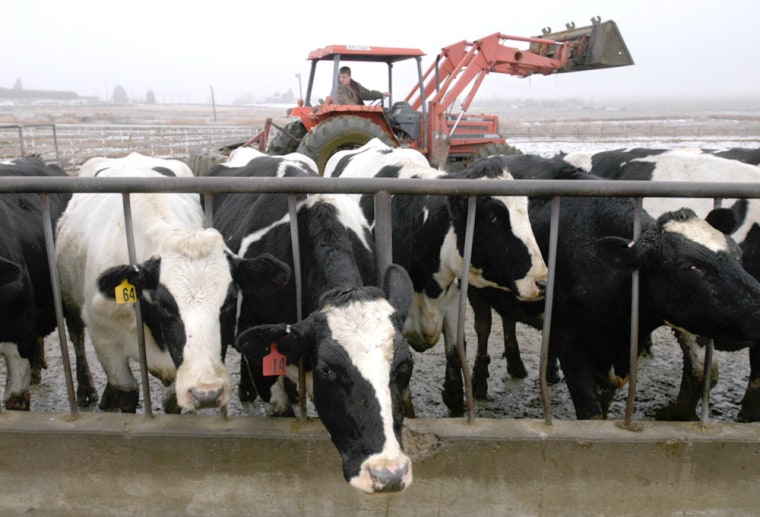Authorities investigating the first case of mad cow disease in the United States are now focusing their attention on cattle that entered the country from Canada with an infected Holstein.
The shift comes after workers buried a herd of 449 bull calves, which included an offspring of the infected cow, in a landfill in southern Washington on Wednesday. The calves were killed as a precaution.
The U.S. Department of Agriculture still is deciding whether other herds that may have been exposed to the infected cow will meet the same fate, said spokesman Nolan Lemon.
Scientists have concluded that eating contaminated feed, not exposure to an infected animal, is the main transmitter of mad cow disease. But federal officials have said they are using an abundance of caution.
The infected Holstein, which was slaughtered Dec. 9, was diagnosed with mad cow disease Dec. 22, becoming the first and only cow in the U.S. found with the illness.
Secure landfill
It was born at a dairy farm in the Canadian province of Alberta and was brought to the U.S. in a herd of 81 cattle in 2001. The only other case of the disease in North American-born cattle was discovered in May in a Black Angus cow from an Alberta herd.
Officials have said they believe both cows probably were infected as calves because they were born before August 1997, when the United States and Canada banned cattle feed that contained parts of cattle, sheep or other cud-chewing animals.
Agriculture officials said the herd had to be killed Tuesday because the calf born to the sick cow was not tagged and could not be identified. They have been unable to rule out the possibility that mad cow disease could be transmitted from mother to calf.
As the dead bull calves were sent for disposal Wednesday, officials said burying the carcasses at a landfill was safe.
The landfill is considered one of the most secure in North America, according to Rabanco Regional Disposal, a Seattle company that contracts with Klickitat County to operate it.
“Once we get them covered up, the risk is very close to zero,” said Kevin Barry, the county’s director of public health, whose agency regulates the landfill.
There is virtually no chance that the rogue proteins called prions, believed to cause mad cow disease, could escape the landfill, Barry said.
The landfill, lined with plastic and clay about 1,500 feet above the region’s aquifer, is expected to operate until about 2040, then be capped and covered with many feet of dirt, he said.
Shut down border?
Several Democrats, including Senate Democratic leader Tom Daschle of South Dakota, announced their support Wednesday for testing all cattle at slaughter. USDA officials have said they are considering a range of options, including more extensive testing.
Daschle also joined with other lawmakers from the Midwest in calling on Agriculture Secretary Ann Veneman to close the border to all Canadian beef products for the time being.
“We need to get as much information about the safety of products from Canada as we can,” he said in Washington, D.C. “The only way to do that effectively is to shut down the border.”
The United States restricted imports of Canadian beef after the case of mad cow in May, but reopened the border to some beef cuts in October. Canadian officials and cattlemen are pushing for the further opening of markets.
“Science dictates that these markets should be open to Canadian beef,” said Prime Minister Paul Martin.
Mad cow disease, or bovine spongiform encephalopathy, eats holes in the brains of cattle. Humans can develop a brain-wasting illness, variant Creutzfeldt-Jakob disease, from consuming contaminated beef products.
